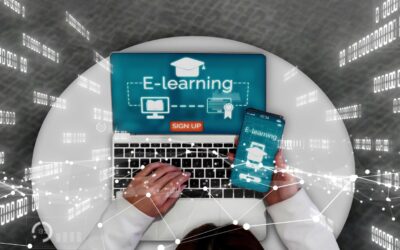Introduction
In recent years, the landscape of education has undergone a significant transformation, largely due to the rise of interactive e-learning. Traditional methods of teaching and learning are being replaced by innovative digital solutions that offer engaging, personalized, and flexible learning experiences. In this blog post, we’ll explore the future of learning and how interactive e-learning is revolutionizing education.
Personalized Learning Experiences
One of the most significant benefits of interactive e-learning is its ability to provide personalized learning experiences. Through adaptive learning algorithms and data-driven insights, interactive e-learning platforms can tailor content and activities to meet the individual needs, preferences, and learning styles of each learner. This personalized approach allows learners to progress at their own pace, focus on areas of interest, and receive targeted support when needed.
Engaging and Interactive Content
Interactive e-learning platforms leverage a variety of multimedia elements, such as videos, animations, simulations, and gamified activities, to create engaging and interactive content. These interactive elements capture learners’ attention, promote active participation, and enhance comprehension and retention of key concepts. By incorporating game mechanics, social interactions, and real-world scenarios, interactive e-learning makes learning more enjoyable and effective.
Accessibility and Inclusivity
Interactive e-learning solutions are designed to be accessible to learners of all backgrounds, abilities, and learning preferences. Accessibility features such as screen reader compatibility, keyboard navigation, and closed captioning ensure that learners with disabilities can fully participate in e-learning activities. Moreover, interactive e-learning platforms embrace diversity and inclusivity by offering content in multiple languages and addressing the needs of diverse learner populations.
Flexibility and Convenience
One of the key advantages of interactive e-learning is its flexibility and convenience. Learners can access educational content anytime, anywhere, using various devices such as computers, tablets, and smartphones. This flexibility allows learners to balance their learning activities with other commitments such as work, family, and hobbies. Additionally, interactive e-learning platforms often offer asynchronous learning options, allowing learners to study at their own pace and schedule.
Data-Driven Insights and Analytics
Interactive e-learning platforms collect and analyze data on learners’ interactions, engagement levels, and learning outcomes. These data-driven insights enable educators and instructional designers to monitor learners’ progress, identify areas for improvement, and make data-driven decisions to enhance the effectiveness of e-learning programs. By leveraging analytics, educators can personalize learning pathways, provide targeted interventions, and measure the impact of e-learning initiatives.
Collaborative Learning Opportunities
Interactive e-learning fosters collaboration and social learning among learners. Through features such as discussion forums, group projects, and virtual classrooms, learners can engage with peers, share ideas, and collaborate on assignments. Collaborative learning enhances communication skills, teamwork, and critical thinking abilities, preparing learners for success in the digital age.
Continuous Learning and Skill Development:
Interactive e-learning promotes lifelong learning and skill development by offering access to a wide range of educational resources and opportunities. Learners can explore new topics, acquire new skills, and stay updated with the latest industry trends and developments. Interactive e-learning platforms often offer microlearning modules, certifications, and professional development courses to support continuous learning and career advancement.
Conclusion
Interactive e-learning is shaping the future of education by offering personalized, engaging, and collaborative learning experiences that empower learners to achieve their educational goals. As technology continues to evolve, interactive e-learning will play an increasingly central role in education, enabling learners to acquire knowledge, develop skills, and thrive in a rapidly changing world. By embracing interactive e-learning, educators, learners, and institutions can unlock the full potential of digital education and create a more inclusive, accessible, and effective learning environment.
Search
Categories
- AI 4
- Analytics & Data Science 16
- Blogs 8
- Brand Identity 23
- Business 10
- CMS & LMS 22
- Development 1
- Digital Marketing 20
- Digital Signage 12
- E-commerce 6
- Education & E-Learning 1
- Enterprise solution 15
- Events 2
- Food & Grocery 1
- Internet of Things 9
- Mobile App Development 15
- News 5
- Open Source Development 12
- SEO Search engine optimization 2
- Software 1
- Staff Augmentation 3
- Uncategorized 24
- Web Design 1
- Web Development 19
- Web Security and Performance 19
- Website Development 2
- WordPress Development 3
Recent Posts
-
Les avantages de choisir un casino proposant des free spins attractifs pour les joueurs
-
Arlequin Casino et ses promotions exclusives qui transforment les jeux en ligne
-
Tendances actuelles des casinos Neosurf et leur impact sur l’industrie du jeu
-
مقارنة شاملة بين كازينوهات قطر التي تعتمد على استخدام VPN
-
Les bénéfices de l’utilisation de Paysafecard dans les casinos en ligne sans soucis


